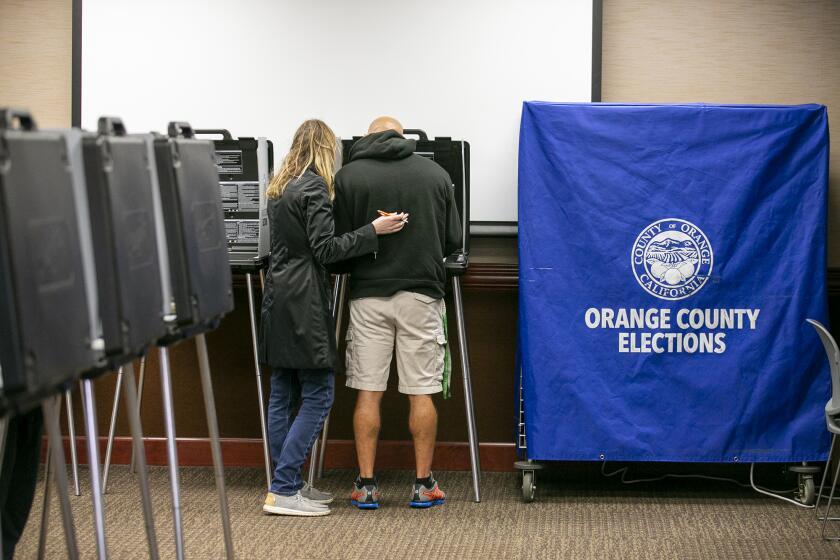Can government make things better?
Today, Dugan and Tanton discuss what roles government should have in regulating gas prices. , they established whether there is an appropriate price for a gallon of gas; tomorrow, they’ll debate environmental issues related to fossil fuel use.
Supply-side regulation
By Judy Dugan
There’s been tough talk before in Congress and the California Legislature about price gouging and improper profits. Oil companies’ response to this political noise is to miraculously boost supply and bring down the price just a bit. Then the threats of action miraculously disappear. This year, elected officials should carry through.
America’s big oil companies figured out long ago that they could make more money by making less gasoline. That’s why the industry hasn’t built a new refinery in 30 years. Since deregulation of the refinery business in 1982, oil consumption has increased 33% but oil companies have kept refining capacity near what it was 25 years ago. Why not? They know that the scarcer the product, the bigger the profit.
That’s not just conspiracy theorizing. A few years ago, Sen. Ron Wyden of Oregon released internal oil company memos showing how, in the late 1990s, refiners realized they had to reduce supply to pump up profits, and that’s what they did. (Read the memos here.) One memo showed that Mobil actually advocated for tougher California environmental rules to drive an independent refiner out of business. And in 2003, Shell tried to demolish, instead of sell, a profitable refinery in California.
What’s needed is not supply-side economics but supply-side regulation. The Department of Energy already monitors oil refiners. It is not a big step to regulatory oversight of the gasoline supply. That should include requiring oil companies to invest more of their successive world-record profits into making gasoline--and storing more of it. Of course, the government should also increase vehicle fuel efficiency standards and more robustly encourage development of renewable fuels.
A Little Regulation, a Big Result
Requiring more supply on hand, particularly in gas-starved California, is the simplest fix for the crazy price spikes that result from tight supplies. Supplies would also be more flexible if there were fewer fuel blends, as Tom noted yesterday. Oil companies must also ease their dealer restrictions on the sale of renewable fuels.
A similarly simple fix would be eliminating the oil company requirement that dealers sell three grades of branded gasoline. Midgrade gasoline is a marketing ripoff. So use the midgrade underground tank to store more regular gasoline, which would effectively increase supply.
Encouraging, and if necessary ordering, better supply management is more effective and less disruptive than price caps or windfall profits taxes, at the state as well as federal level. A package of proposed legislation in the California Assembly is a good if small start, with tougher oversight of refinery outages and requirements for much more information reporting by the refining industry.
The package would also take steps to end the oil companies’ “hot fuel” ripoff. When gasoline (or any fuel) warms up, it expands and offers less energy per measured gallon. That’s why oil companies measure their gasoline, for both sales and tax purposes, as if it were 60 degrees Fahrenheit. In reality, gasoline in California averages about 74 degrees. The cost to drivers statewide is at least $450 million per year.
Government’s responsibility is not to take over the fuel industry, but to set it on a track that is fair to its customers.
Judy Dugan is the research director for OilWatchdog.Org and the Foundation for Taxpayer and Consumer Rights.
Government has been the problem, not the solution
By Tom Tanton
Judy,
You raised a few points yesterday that need a reply. First, the electricity crisis in California was an example of bad government, not markets gone amokor “rapacious,” as you put it. Electricity utilities were more regulated after AB 1890 (the Electric Utility Industry Restructuring Act of 1996) was implemented, which almost guaranteed failure. I do agree with your point that we need more refining capacity, but that must go along with expanded petroleum exploration and development, in many areas beyond the Arctic National Wildlife Refuge in Alaska. Finally, oil companies’ profit margins are below industry averages, and many years they see a net loss. I’m not sure much can be done there without threatening the investments that will be necessary to maintain and expand capacity both upstream and downstream. Keep in mind that oil company financials are long-term plays, not short-term.
I agree that “trust but verify” is a good policy. In the case of oil companies, verification has come from almost yearly investigations by the Federal Trade Commission over the past decade. Those investigations have also looked at the specific issue of mergers, which you raised, and found no evidence of misbehavior.
I disagree with your contention that oil companies have restricted refining capacity to the same level since 1985. Refining capacity has increased by about 15% since then, mostly by expanding capacity at existing facilities. The data can be found at eia.doe.gov. That has not quite kept up with gasoline demand, but it is indeed conspiracy theorizing to believe that gasoline companies try to restrict capacity. Instead, perhaps it is the overly complex and burdensome regulations that keep capacity low. Many new refineries have been proposed since 1985, yet only one seems to be making progress toward completion.
Judy, I agree that “hot fuel” expansion needs to be addressed, but technologies such as temperature compensating dispensers seem more reasonable than regulation based on some bureaucratically determined average temperature. Similarly, mandating higher vehicle efficiency standards will take a long time to have any effect given fleet turnover. Consumers have a broad range of choice available today, from six miles per gallon to 60. They also have many options to control their own gasoline budgets, depending on their individual circumstances. Regarding your idea to have mid-grade underground gas tanks store regular unleaded fuel, I doubt drivers who need mid-grade gas (such as myself) would appreciate the lack of choice and performance. Further, gasoline does degrade in storage over time, so using mid-grade gas tanks to store more unleaded fuel could cause other problems.
I agree with you that windfall profit taxes and price caps are not a good idea.
Oil companies are spending tremendous amounts of money to develop alternatives to petroleum. Between 2000 and 2005, they spent about $90 billion on alternative fuels and efficiency improvements, out of about $115 billion total spent by those companies, the federal government and others on such programs. To suggest that oil companies are not investing their record profits is simply untrue. Click here (pdf) to read a breakdown of those investments by type.
Judy, I agree that the government should consider some level of regulation, although your ideas about mandating supply management have some serious problems. Any new regulations should only be enacted after a dispassionate review of the current regulations that limit capacity (extraction and refining as well as retail sales).
I suggest readers visit factsonenergy.org, a website and blog that I host, for some analysis that addresses energy issues.
Thomas Tanton is the vice president and senior fellow at the Institute for Energy Research, and an environmental fellow at the Pacific Research Institute.
More to Read
Get the L.A. Times Politics newsletter
Deeply reported insights into legislation, politics and policy from Sacramento, Washington and beyond. In your inbox three times per week.
You may occasionally receive promotional content from the Los Angeles Times.






